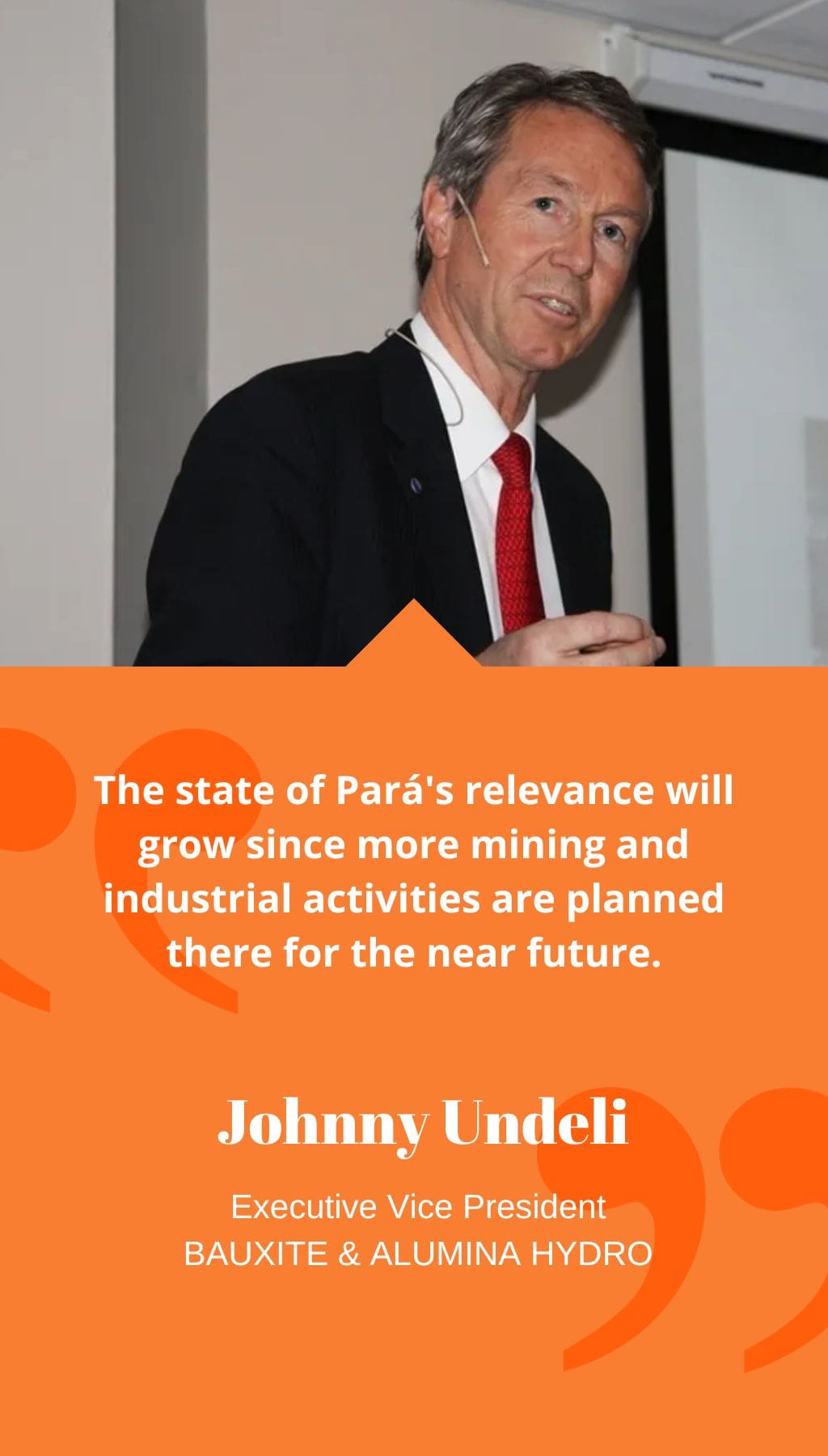
- Brazil | 29 March 2016

Can you provide a timeline of the main milestones Hydro achieved in Brazil since establishing its Rio de Janeiro office in 1977?
Hydro started its partnership with Vale in 1974, owning 5% of MRN (Mineração Rio do Norte). In 1997, it acquired the extrusion plant in Itu, in São Paulo (Hydro Itú), which is now undergoing a merger with SAPA. In 2000, Hydro became a shareholder in Alunorte, the largest alumina refinery in the world located in Barcarena, with a 34% ownership in the asset. Hydro’s most significant move occurred in 2010 when it acquired the bauxite mine Hydro Paragominas, becoming the majority shareholder of Hydro Alunorte (92% ownership) and Albras (51% stake), a primary aluminum company in Barcarena, Pará. Additionally, Hydro also has bauxite mineral rights in Minas Gerais, Pará, and Amazonas.
What is the strategic importance of Hydro’s Brazilian operations to the company globally?
Hydro is a fully integrated aluminum company in Brazil, from bauxite mining to downstream manufacturing. A strong position in the upstream, given the potential of the assets acquired, is fundamental to the future of the company, which became independent from other suppliers and has high-quality raw materials for manufacturing aluminum and other downstream operations. Brazil is the second-largest integrated producer of bauxite and alumina in the world, and Hydro is the national leader in bauxite trading and alumina refining, with 50% and 56% of the market shares in the country.
How is Hydro addressing environmental issues?
Hydro’s environmental goals cover the most important aspects of its operations, such as air emissions, climate change (CO2 emissions), water use, landfilled wastes, and mining footprint. For its latest expansion at Alunorte and the construction of its new bauxite refinery, CAP, Hydro has incorporated new equipment for emission controls that meet high global standards, which are much stricter than Brazilian legislation in the matter. Additionally, Hydro’s bauxite mining activity in Paragominas should achieve a balance between the active mine and rehabilitation area by 2017, which means that for each hectare explored, one hectare will have been rehabilitated.
What has been Hydro’s experience in Para, and do you believe that the state can challenge Minas Gerais’ dominant position in the mining sector in the future?
The state of Pará’s relevance will grow since more mining and industrial activities are planned there for the near future. Hydro has managed to establish a good relationship with different stakeholders in the region and wants to maintain a transparent dialogue with them to clarify expectations, share information, and seek win-win opportunities. Although Minas Gerais has more experience, the state of Pará is currently taking some steps in an attempt to structure mining activities, taking into consideration the challenges that companies like Hydro face and the need for a stable scenario to attract and maintain planned investments.
How has the evolution of sectors such as transportation and construction impacted Hydro’s business in Brazil?
Transportation and construction are important business segments for Hydro Itu and both are under some influence of the big events planned for Brazil in the years to come. However, the total extrusion market, even considering the upcoming events, is not growing as fast as experts had announced two or three years ago. The problem seems to be the industrial activity not receiving necessary investment. Some industrial segments are under the threat of imports from China and other sources while inflation rates are moving upwards. On the other hand, Hydro Itu has completed an investment aimed at increasing capacity and making its product line wider.














